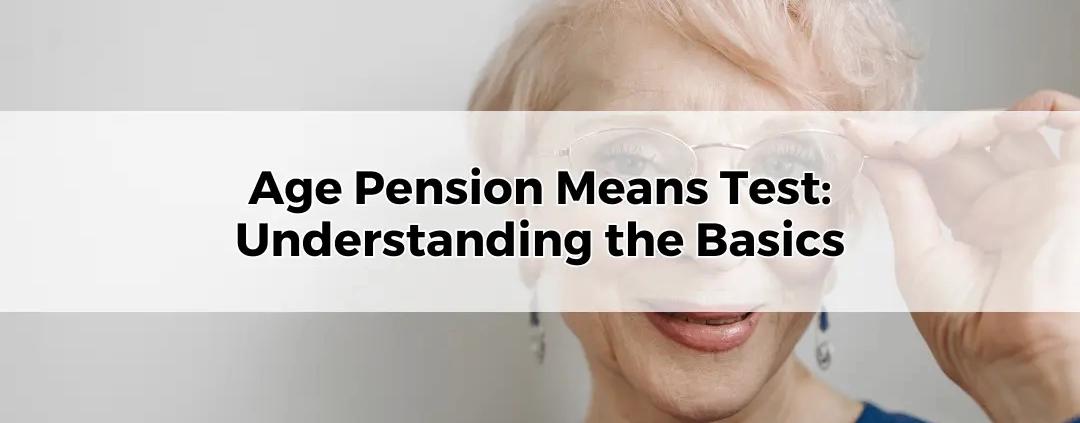Age Pension Means Test: Understanding the Basics
Table of Contents
ToggleNavigating Australia’s Age Pension system can be challenging, particularly when it comes to understanding the means test. This crucial evaluation determines eligibility and payment rates, balancing both income and assets to ensure support reaches those who need it most. Whether you’re planning for retirement or assisting a loved one, understanding the intricacies of the means test can help secure financial stability. Here, we explore the essentials of the Age Pension means test, providing clarity and actionable insights.
What is the Age Pension Means Test?
The Age Pension means test is a dual assessment of income and assets used to calculate how much financial support an individual or couple is entitled to receive. It’s designed to ensure that government assistance is targeted at retirees who genuinely need it.
The Purpose of the Means Test
The Australian government provides the Age Pension as a safety net for older citizens. However, with finite resources, the means test ensures that those with substantial income or wealth receive less assistance, reserving full benefits for those with greater financial need.
Legal Framework and Governing Body
The means test is governed by the Department of Social Services under the Social Security Act 1991, with administration handled by Centrelink. These agencies apply consistent rules to ensure fairness while protecting public funds.
Who Needs to Undergo the Means Test?
Eligibility for the Age Pension depends on meeting specific criteria, including age, residency, and financial thresholds determined by the means test.
Eligibility Criteria
To qualify for the Age Pension, you must:
- Reach Age Pension age (currently 67 for those born after 1 January 1957).
- Be an Australian resident, typically for at least 10 continuous years.
Exemptions to the Means Test
Certain groups, such as war veterans receiving specific benefits, may be exempt from aspects of the means test. These exemptions recognise their unique contributions and circumstances.
Components of the Means Test: Income and Assets
The means test comprises two key parts: the income test and the assets test. Centrelink evaluates both and applies the test that results in the lower pension payment.
The Income Test
The income test measures assessable income from various sources, including:
- Employment wages.
- Income streams from superannuation.
- Investments, such as interest or dividends.
Income Thresholds
The maximum income you can earn without affecting your pension is modest:
- Singles: $204 per fortnight.
- Couples: $360 combined per fortnight.
Exceeding these amounts results in a reduction of $0.50 for every dollar above the threshold.
Deeming Rules for Financial Investments
Centrelink uses “deeming” rules to calculate income from financial investments, assuming a standard rate of return rather than actual earnings. While this simplifies administration, it may underestimate real returns in high-performing markets.
The Assets Test
The assets test evaluates the value of owned assets, including real estate, vehicles, and investments.
Homeowners vs Non-Homeowners
Homeownership significantly affects the assets test:
- Homeowners face lower thresholds since their principal residence is exempt.
- Non-homeowners are afforded higher asset thresholds to balance this exclusion.
Assessable vs Exempt Assets
Not all assets are included. For example, prepaid funeral plans and certain annuities may be exempt, providing planning opportunities for retirees.
How Payments Are Calculated
Centrelink applies both the income and assets tests, using the results of whichever test provides the lower pension rate. This system ensures fairness but requires careful financial planning to optimise outcomes.
Understanding the Taper Rate
Pension payments reduce incrementally as income or assets exceed thresholds:
- Income test: Payments decrease by $0.50 for each dollar over the threshold.
- Assets test: Payments decrease by $3 for every $1,000 above the threshold.
Common Financial Pitfalls to Avoid
Misinterpreting the Deeming Rules
Many retirees misunderstand deeming rates, leading to unexpected reductions in pension payments. Staying informed about current deeming thresholds is essential.
Overlooking Gifting Rules
Centrelink imposes strict rules on gifting to prevent individuals from artificially reducing assets. Gifting more than $10,000 in a single year, or $30,000 over five years, can affect your pension entitlement.
The Role of Superannuation in the Means Test
Superannuation is often a retiree’s largest financial asset and plays a significant role in the means test.
Superannuation Income Streams
Income drawn from superannuation accounts is assessed under the income test, while the account balance is included in the assets test once you reach pension age.
Transition-to-Retirement Pensions
Transition-to-retirement pensions can be advantageous for those under 67 but may impact eligibility once you qualify for the Age Pension.
Centrelink Assessments: What to Expect
Documentation Requirements
When applying for the Age Pension, you’ll need detailed records, including:
- Bank statements and investment details.
- Superannuation account summaries.
- Property valuations.
Timelines and Reviews
The assessment process can take several weeks, and recipients are subject to regular reviews to ensure ongoing compliance.
Strategies to Maximise Age Pension Entitlements
Restructuring Assets
Reorganising your financial portfolio can help reduce assessable income or assets. For example, investing in exempt assets or reducing surplus cash holdings can lower your means test liabilities.
Leveraging Financial Products
Centrelink-friendly annuities and lifetime income streams can reduce the value of assessable assets while providing stable income.
How Aged Care Costs Impact the Means Test
Residential Care Fees
If you move into residential aged care, accommodation bonds or daily fees may alter your overall financial profile, affecting pension calculations.
Means-Tested Care Fee
Separate from the Age Pension means test, this fee considers both income and assets to determine contributions to aged care costs. It often overlaps with pension calculations, requiring strategic planning.
Tools and Resources for Self-Assessment
Centrelink Calculators
Centrelink offers online calculators to estimate pension entitlements based on your financial circumstances.
Seeking Professional Advice
While tools provide general guidance, consulting an aged care financial adviser ensures a tailored strategy that maximises entitlements.
Impacts of Legislative Changes on the Means Test
Historical Adjustments
Adjustments to deeming rates and thresholds over time can significantly impact pension payments. Staying informed about such changes is critical for effective planning.
Potential Reforms
Proposals for future reforms, such as altering asset exemptions or income thresholds, could influence pension eligibility and payments, making regular reviews essential.
Planning Ahead: Securing Your Financial Future
Importance of Early Planning
Starting your financial planning well before reaching Age Pension age allows for strategic decisions and avoids last-minute adjustments that may reduce entitlements.
Collaborating with Financial Advisers
Engaging with an experienced aged care financial adviser can help navigate the complexities of the means test, ensuring your finances align with both immediate needs and long-term goals.
Understanding the Age Pension means test is essential for Australians entering retirement. By demystifying its complexities and employing proactive strategies, retirees can optimise their entitlements and secure a stable financial future. Whether you’re planning for yourself or supporting a loved one, the right knowledge and expert advice can make all the difference









